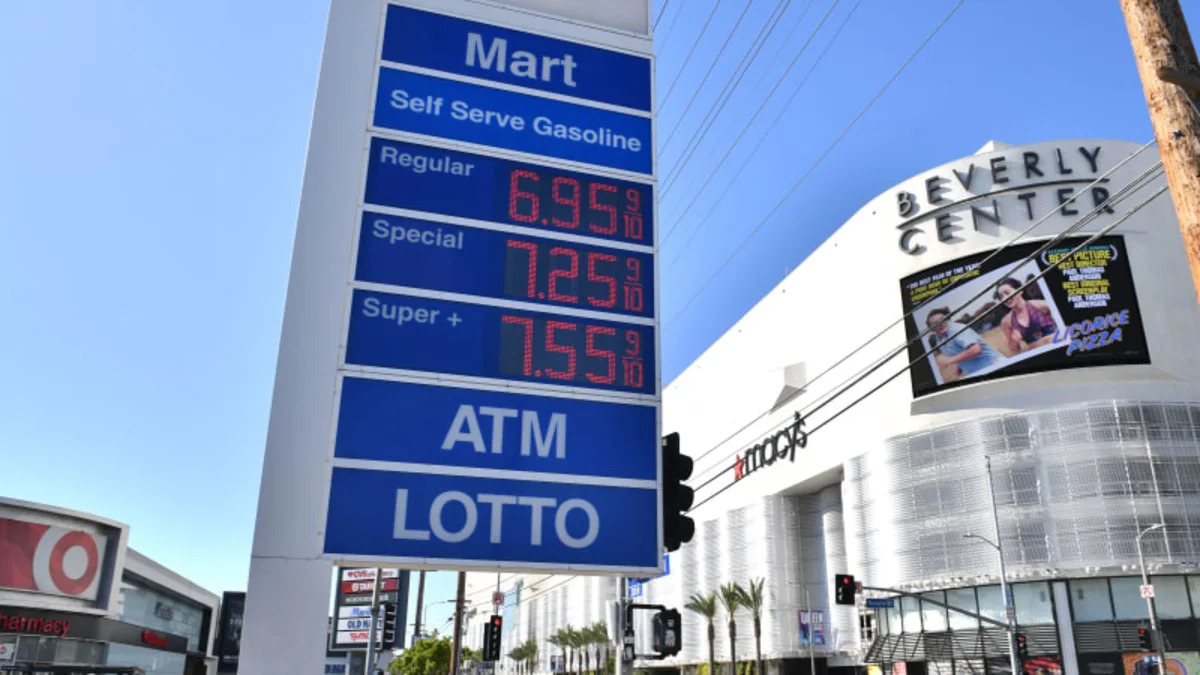The price of a gallon of unleaded nears $7 at this station in Los Angeles. (Getty Images)
U.S. President Joe Biden announced Tuesday that the U.S. is "targeting a main artery of Russia’s economy" by banning imports of oil and gas. U.S. drivers are now paying more for gasoline than at any other time in history as demand surges and the war in Ukraine threatens global oil supplies.
Today, I’m announcing that the United States is targeting a main artery of Russia’s economy.
— President Biden (@POTUS) March 8, 2022
We are banning all imports of Russian oil and gas.
Average pump prices in the U.S. are now $4.173 per gallon, according to auto club AAA. That's up 11 cents since Monday. Government data going back to 1990 show prices have never been higher than they are now — though If indexed for inflation, the July 2008 all-time national average gas-price peak of $4.10 would be the equivalent of $5.31 today, so in constant dollars 2008 remains the peak price.
In California, the most expensive U.S. state for drivers, prices have surged to $5.444 a gallon but were approaching $7 in some places in Los Angeles.
Record pump prices pose a major challenge for Biden, whose attempts to cap gasoline costs and rein in inflation have so far had little impact. That means American households -- already slammed by soaring food costs and electricity prices — are getting hit on all sides.
- Autoblog's Cheap Gas Prices Near Me finder
Prices are probably not coming down anytime soon. U.S. gasoline futures hit record highs on Monday as the market reckoned with lost Russian oil-product exports that could be cemented by a formal ban — especially if the ban extends to other Western nations beyond the U.S. ban announced by Biden today. Despite the pain it may cause at the pump, a majority of Americans in a Reuters/Ipsos poll favored the ban as punishment for Russia's war against Ukraine, even if it forces pump prices up even further, and another poll just out from Quinnipiac University had similar findings.
Surges in futures markets tend to precede pump-price gains by a few weeks.
Russian oil made up only about 3% of all the crude shipments that arrived in the U.S. last year, data from the U.S. Energy Information Administration show. But when also including other petroleum products, like unfinished fuel oil that can be used as a feedstock to produce gasoline and diesel, Russia accounted for about 8% of the U.S.’s 2021 petroleum imports. And if other nations join the ban on Russia's lucrative oil trade, which helps fund the war against Ukraine, it could affect the overall global market.
“Product markets are even tighter than crude markets. Russia is a major product exporter, and those have been hit even harder than crude,” said John Auers, executive vice president of Turner Mason & Co.


Sign in to post
Please sign in to leave a comment.
Continue